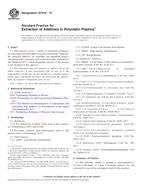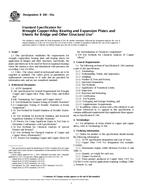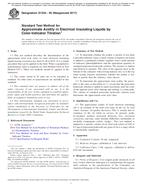1.1 This practice describes expected outcomes associated with a property management system. It is a measure of achievement rather than process, and is descriptive rather than prescriptive.
1.2 Outcomes are defined as information, events, objects, or states of being produced as a result or consequence of a plan, process, accident, effort, or other similar action or occurrence.
1.3 An output measure is the tabulation, calculation, or recording of activity or effort and can be expressed in a quantitative or qualitative manner.
1.4 An outcome measure is an assessment of the results of a program activity compared to its intended purpose.
1.5 Consistent with Practice E 2452, these outcomes are grouped into process management outcomes and operational outcomes.
1.5.1 Although they may be directly related, strategies and tactics should not be confused with outcomes. Strategies are long-term plans of action designed to achieve a particular goal. Tactics are maneuvers or actions calculated to achieve some end. For example, increasing exercise is a strategy to attain the goal or outcome of fitness. Running is a supporting tactic to achieve the goal or outcome of fitness. Other tactics or groups of tactics may achieve the same outcome. On the other hand, as the definition of outcome indicates, tactics are not required for attaining outcomes. For example, fitness may be an unplanned result of a job requiring physical exertion.
1.6 This practice describes the outcomes at a high level, with limited discussion of each outcome or components of each outcome. The intent is to provide a framework for current and potential additional standards. A cross reference relating current standards to the outcomes is provided in Section 5.
1.7 The outcomes further described in Section 5, are listed in the following:
1.7.1 Process Management Outcomes:
1.7.1.1 Outcome 1–Mission Support
1.7.1.2 Outcome 2–Accounting and Accountability
1.7.1.3 Outcome 3–Information Management
1.7.1.4 Outcome 4–Planning
1.7.1.5 Outcome 5–Relationships
1.7.2 Operational Outcomes:
1.7.2.1 Outcome 6–Property Functionality
1.7.2.2 Outcome 7–Resource Optimization
1.7.2.3 Outcome 8–Property Visibility
1.7.2.4 Outcome 9–Safety and Security
1.7.2.5 Outcome 10–Installation, Movement, and Storage
1.8 In Section 5, a rating scale is provided to quantify in a uniform manner achievement of outcomes and outcome components.
1.9 This practice, in combination with Practice E 2279, clarifies and enables effective and efficient control and tracking of property and may provide an enhanced basis for making decisions surrounding both property and property management systems.
1.10 This practice is intended to be applicable and appropriate for all property-holding entities.
1.11 This practice covers tangible property as defined in Terminology E 2135. Consistent with the nomenclature used, individual portions of the practice may be applicable to more limited subsets of tangible property, for example to equipment and not to material.
1.12 This standard does not purport to address all of the safety concerns, if any, associated with its use. It is the responsibility of the user of this standard to establish appropriate safety and health practices and determine the applicability of regulatory limitations prior to use.
Product Details
- Published:
- 02/01/2009
- Number of Pages:
- 7
- File Size:
- 1 file , 100 KB


